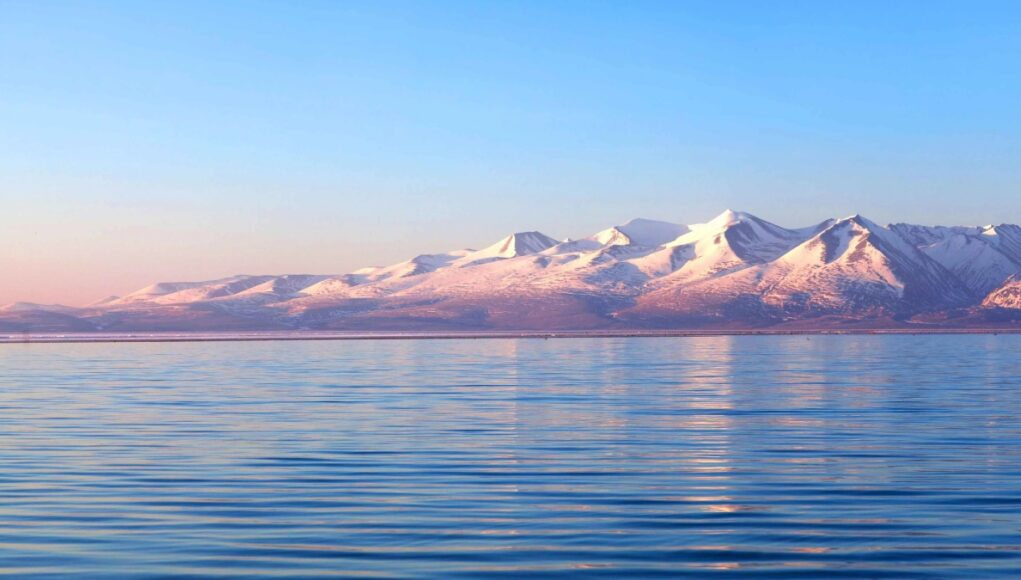Source : INDIATV NEWS
Lake Mansarovar and Lake Rakshastal are at the foot of Mount Kailash. Despite the location and environment of both being similar, there are many differences between them. In this article, we have shared all the details.
The Kailash Mansarovar Yatra is going to start on June 30 this year. Apart from visiting Mount Kailash, during this journey, people also visit Lake Mansarovar and Lake Rakshastal. Both of these lakes are situated at a distance of 2-3 kilometres, and the environment is the same for both. Despite this, many differences are seen between Rakshastal and Mansarovar. The people of Tibet consider Rakshastal a cursed lake and Mansarovar a holy lake. The same belief is there in Hinduism as well. However, it is a matter of curiosity for scientists, too, because despite having similar conditions, these two lakes are different. Let us know about the mystery and difference related to Lake Mansarovar and Lake Rakshastal.
Differences between Lake Mansarovar and Lake Rakshatal
| Lake Manasarovar | Lake Rakshastal |
| Symbol of purity and light. | Symbol of impurity and darkness. |
| Bathing place of the gods. | Abode of the Asuras. |
| The water of Mansarovar Lake is sweet and drinkable. | The water of Rakshasatal is highly salty and not drinkable. |
| This lake is formed by the water streams flowing from the Himalayas. | This lake is formed by melting snow and underground water. |
| The colour of this lake is clear and blue. | The water of Rakshasa Tal is deep blue and changes colour frequently. |
| This lake is famous for worship, bathing, and meditation. | You can see the Rakshastal only from a distance; going near it and taking a bath here is prohibited. |
| Fish and other aquatic life can be seen in Mansarovar Lake. |
No aquatic life is seen in Rakshasatal; there is no vegetation around it. |
| It is related to Shiva-Parvati, Brahma, positivity, peace and Sun. | It is related to negativity, impurity, darkness, the Moon, and Ravana. |
Religious beliefs
During the Kailash Mansarovar Yatra, people meditate near the Mansarovar Lake and worship there. There are queues to drink the water of this lake. On the other hand, no one goes too close to Rakshastal. The water of Rakshastal is considered to be very turbulent and disturbing. In Buddhism, Mansarovar Lake is a symbol of light, and Rakshastal is a symbol of darkness. According to Hinduism, Mansarovar Lake is the lake of Lord Shiva and Mother Parvati. While Rakshastal is believed to be related to Ravana. Therefore, Rakshastal is also known as Ravana Tal. There are no islands in the middle of Mansarovar Lake, whereas there are islands named Dola, Dosharba, and Lachato near Rakshastal.
Why are these lakes different despite being in the same place?
Lake Mansarovar and Lake Rakshastal are completely different despite being in the same environment and at the same height. Since ancient times, people have wanted to know why these two lakes are so different despite being in the same place. However, no one has the answer to this to date; even science has not been able to solve this puzzle. In Buddhist and Hindu religious texts, Rakshastal is considered a symbol of demonic power, and Lake Mansarovar is considered a symbol of divine power, but the answer to why there is so much difference between them is not completely clear there either. It is written in Hindu religious texts that Ravana took a dip in Rakshastal and worshipped Lord Shiva near this lake. Due to Ravana bathing in this water, Rakshastal was filled with negative powers. However, science does not believe the facts mentioned in religious scriptures, but science has also not been able to answer why there is so much difference between Mansarovar and Rakshastal despite being at the same place.
SOURCE : INDIATV NEWS







